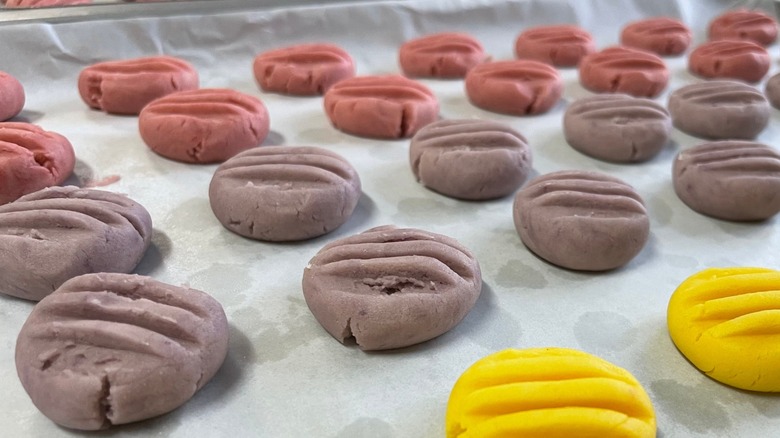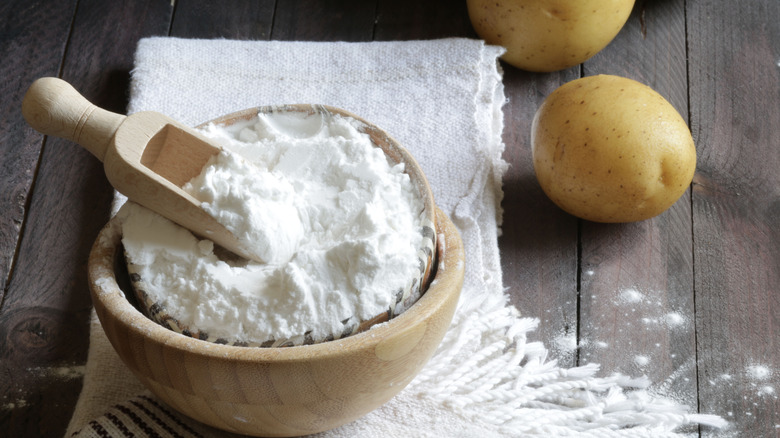Potato Starch Is The Secret Ingredient You Need For Next Level Cookies
Who doesn't love a cookie? Even bad ones are good, right? But great ones are often transcendent. Of course, great cookies can take many forms, from crunchy delights to buttery little numbers, but it's hard to beat a cookie that is beautifully yielding and moist. The problem, as many bakers are well aware, is getting there. Tips and tricks abound, but one that many cookie makers likely haven't considered seems a bit savory: potatoes.
Well, not whole potatoes. Rather, potato starch can be deployed to make cookies that are almost otherworldly in the tenderness department. The secret lies in the fact that potato starch doesn't contain any gluten, unlike flour, which develops long chains of gluten proteins when worked as is generally called for when preparing cookie dough. When potato starch is used to displace some of the flour in a recipe, it helps to mitigate the formation of gluten.
Gluten is the substance that makes some baked goods and pasta irresistibly chewy but can make cookies tougher and more toothsome. In the moisture department, potato starch has an advantage over wheat flour and other processed starches, such as cornstarch. It has the ability to retain more moisture than its counterparts, which makes for a cookie that is softer and more crumbly than others.
A super starch
I know what you're thinking: Won't the cookies come out tasting like a baked potato? Nope, and the reason is that, although potato starch is processed from potatoes, it isn't the same thing as whole potato or even dried potato flakes. Rather, potatoes are crushed in order to extract and separate the starch molecules from the potato cells. The result is a fine white powder that has a range of uses from maintaining consistency during baking to coating fried foods to thickening up sauces. Don't get it confused with potato flour, though, which is made of ground and dried whole potato bits.
While not unheard of in baking, the textural difference between the two will have a noticeable effect on the end result of the cookies. The most common cookie to call for potato starch is a German variety that goes by different names, from the poetic melting moments to the more straightforward German potato cookie. These rotund, yet diminutive shortcake-adjacent cookies crumble and dissolve in a most delightful way in the mouth.
The ingredient list is relatively simple, with the cookies coming together from nothing more than salted butter, cake flour, vanilla, powdered sugar, and potato starch, though cornstarch is sometimes also used. Beyond melting moments, potato starch has utility throughout baking. For example, potato starch is often seen in gluten-free recipes for brownies, a pastry with which quality is contingent on moisture content. Similarly, it can be used to cut or reduce the gluten content and up the moisture in cakes, pie crusts, and even savory pastry applications.

